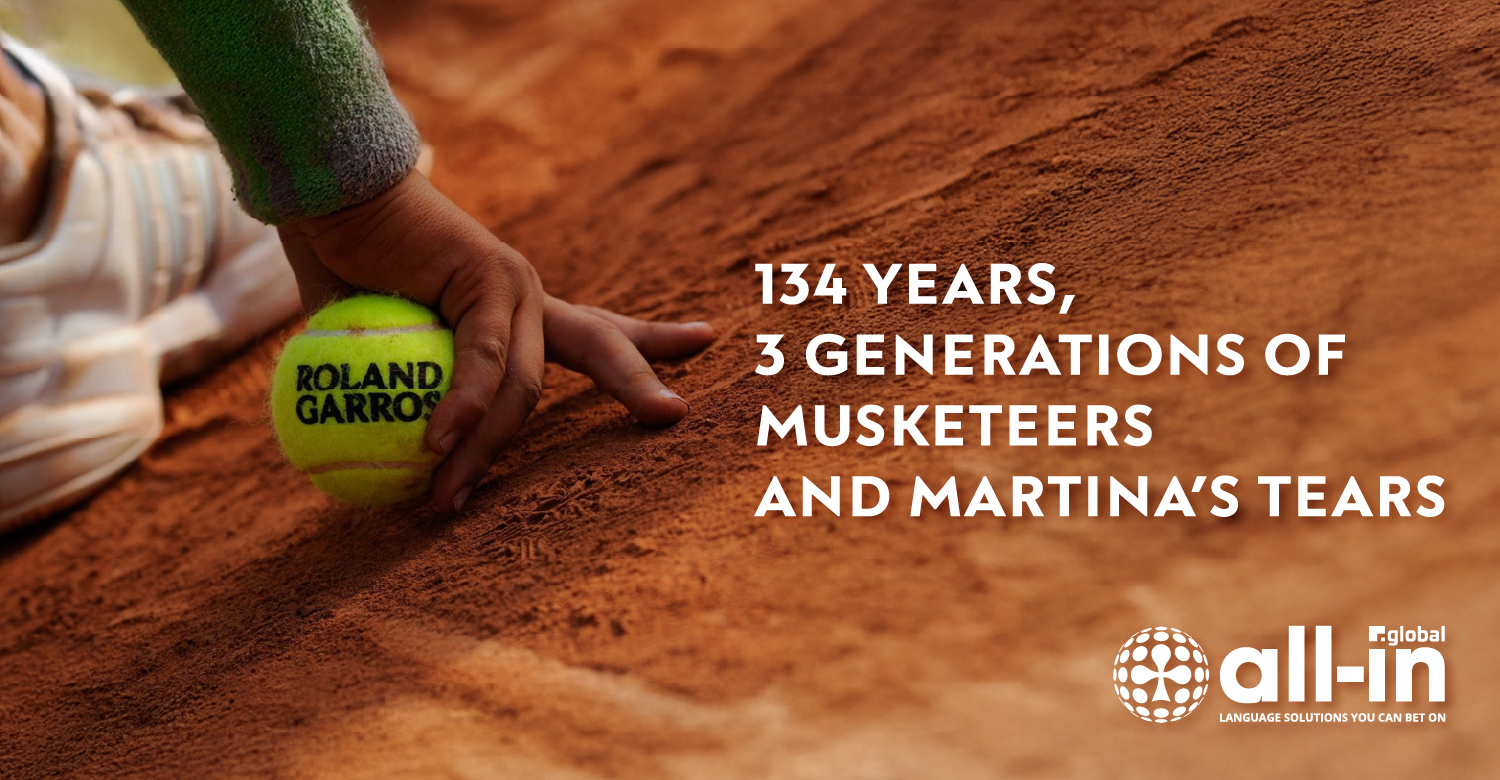
Wed Apr 16th / James Pacheco
ROLAND GARROS: 134 YEARS, THREE GENERATIONS OF MUSKETEERS AND MARTINA’S TEARS
Learn the history behind the naming of the tournament as Roland Garros, who were the four Mousquetaires, Martina’s meltdown in Paris in late May and why Casper Ruud is this year’s dark horse, in the time it takes to drink a cafe latte…
If it’s early-morning starts for those living in Europe, matches played at dangerously high temperatures and ‘pally’ on-court post-match interviews with the winner conducted by Jim Courier you like, then you’re certain to like the Australian Open.
Huge serves, uneven bounces, blazer-wearing line judges, polite applause from respectful crowds munching on overpriced strawberries and cream and washed down with pimms and champagne…Wimbledon is the one for you.
At the other extreme, if it’s 4 am finishes, boisterous and unruly partisan crowds, celebrities sitting in the front row including NBA players and hip-hop artists supporting the local heroes and heavy-metal-style tennis you’re after, you’re probably a US Open fan.
Then there’s the French Open. The second Grand Slam of the year is perhaps the most unique of the four, for starters because it’s the only one played on clay. If Wimbledon is a sprint race contested on manicured lawns by players wearing starched all-white outfits, the French Open is an oxygen-sapping, lactic-acid producing two-week marathon of gruelling, attritional tennis where if your outfit isn’t filthy with orange-brown clay on it by the end of the match, it’s because you haven’t been trying hard enough. Mesdames et messieurs, we give you: Roland Garros.
True or False?
Let’s ‘serve’ up (spoiler alert: that’s not the last of those) some statements about the French Open which we’ll then return (there’s another) with a thorough confirmation or denial of the truth of the statement to allow you to quickly improve on your French Open/Roland Garros knowledge.
Love-all.
Roland Garros was a champion tennis player.
Verdict: False
The French Open, as it’s referred to in English, is officially called the Internationaux de France de Tennis and known in all languages as Roland Garros.
But who was Roland Garros? He was a French aviator and pioneer (1888-1918) who was also the first man to cross the Mediterranean Sea by airplane and one of the first-ever fighter pilots, playing an important role for the French Air Force during the First World War. His plane was eventually shot down, resulting in his death the day before his 30th birthday. His executioner is likely to have been the infamous German fighter pilot and Garros’ rival, Hermann Habich.
There’s no evidence Garros ever played a tennis match his whole life but when the Stade de France offered the French tennis authorities three hectares of land on which to build a new tennis stadium, the only condition they imposed was that it would have to be called Roland Garros, in honour of the War Hero.
So not only was he not a tennis player, but he wasn’t even an ace (there’s your third one) fighter pilot. The criteria to be one of those is that you needed to have shot down five or more aircraft; he ‘only’ managed four.
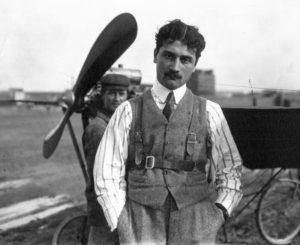
The Coupe des Mousquetaires was once won by Athos.
Verdict: False.
False is doing it a disservice because it’s absolute nonsense to even suggest it.
The Coupe des Mousquetaires is the trophy awarded to the winner of the men’s singles event at Roland Garros, weighing 14 kg and standing at 40cm high, with a width of 19cm; it was created in 1981.
The trophy is held in the office of the president of the French Tennis Federation (FTF) all year round except when it’s presented to that year’s winner and leaves the building for a few hours to be paraded on Court Philippe-Chatrier. The winner is then presented with a slightly smaller version of it, made of silver, which he gets to keep for good. You know, the one that Rafael Nadal had a habit of always biting on.
King’s Musketeer Athos, of course, was more handy with a sword than a tennis racket. He was also a fictitious creation of French writer Alexandre Dumas, so there’s that small detail too as regards why the famous trophy wasn’t named after him, Aramis and Porthos.
Instead, the Mousquetaires or Philadelphia Four as they were also collectively known were: Rene Lacoste (he of the famous sports clothes brand), Jean Borotra, Henri Cochet and Jacques Brugnon, the four best French players of their day. They dominated the sport in the 1920s and 1930s, winning 18 Grand Slam singles titles between them and six straight Davis Cup wins, including the famous one in Philadelphia on foreign soil.
Indeed, it was that win in Philadelphia in 1927 that inspired the FTF to build the Roland Garros complex, so that they had a first-class venue at which to host the US Davis Cup team. France beat them 4-1.
A few months later the first-ever edition of the French Open to be played at Roland Garros got under way, meaning this tournament is, as of 2025, 134 years old.
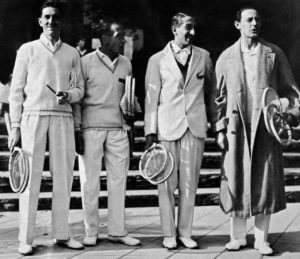
The Parisian crowd made Martina Hingis cry.
Verdict: True
In 1999 Martina Hingis, known sometimes as the ‘Swiss Miss’ was the beautiful, sassy World’s Number-1 ranked female player with three Australian Open titles, one Wimbledon and one US Open win under her belt, while still in her teens.
Though she was fresh from winning the 99 Australian Open a few months earlier, some cracks were developing with fans feeling she was bratty, entitled, petulant and at times disrespectful of her opponents. None more so than when accusing 1999 Australian Open runner-up Amelie Mauresmo, perfectly open about her gay relationship, of being ‘half a man’.
But it was business as usual at Roland Garros, negotiating her way to the final without much fuss to meet the great Steffi Graf in it. Graf had 21 Grand Slam singles titles to her name at the time but who at 10 years Hingis’ senior, was very much in the twilight of her career.
It all started well for Hingis, racing to 6-4 in the first set and 2-0 in the second. But that’s when she made her big ‘Miss’take.
She disputed a line call and still refused to accept it even after the Umpire had taken a second look. She defied both convention (and the rules of the game) to cross over to Graf’s side of the court, point to the mark and argue her case all over again.
While Graf stood there bemused but silent, it was all too much for the Parisian crowd to take. They booed, they jeered, they hissed, they shouted for Steffi and cheered Hingis’ increasingly frequent unforced errors.
If Hingis’ tennis game was falling apart on court, her own emotions were scattered all over the dirty clay of Court Philippe Chartrier.
Hingis burst into tears, refused to carry on playing and was threatened with disqualification by the Tournament Referee if she didn’t get on with it. She did, but it was all too late and by then, she’d passed the rubicon.
A lengthy bathroom break, a change of attire that included coming back sporting a bandana, a smashed racket, constant requests to the Umpire to quieten the crowd and even an audacious underarm serve just turned the crowd against her even more.
Graf, with over 100 career titles to her name and who had seen it all before (though perhaps not to this extent) played her part to perfection. “Can we just play tennis, ok?” she asked the Umpire in a faux-innocent tone.
1-0 became 1-1 in sets and that quickly escalated to 6-2 to Graf in the third. It was painful to watch and the environment was so hostile that Hingis didn’t want to return to court to pick up her runner-up prize, before mother Melanie convinced her nothing good was to come of it and the sobbing teenager at least returned for that.
That was Graf’s last Grand Slam win before retiring shortly after thanks to an ever-increasing amount of injuries, while Hingis never managed to win the French Open title, or any further Grand Slam singles title for that matter, later becoming something of a doubles specialist.
“I think I lost my mind that day” Hingis later reflected.

Roland Garros Lingo, Lacoste, Leconte and La Monf
Like most of us mere mortals, you’ll probably be watching the French Open action from the comfort of your living room, a chilled glass of Chablis and some Brie on a cracker probably being the most French things in the room. But let’s imagine that in a parallel universe you’ll be there at Roland Garros. Here’s some lingo with which to impress the die-hard local fans.
‘They haven’t done a great job with the balayage’ – Coming from the French verb ‘to sweep’, ‘le balayage’ is the routine sweeping of the courts with giant brooms to ensure there aren’t small particles of clay that could create uneven bounces or too much dust that can slow down the court. You’re welcome to invite the attractive le balayeur (one of the sweepers) for a post-match glass of Cointreau, if you’re in that way inclined.
‘When are they getting on with the Débâchage?’ – Dressing and undressing the court of play in English simply means covering the court when it rains and uncovering it when it stops raining. If it ever does…in England. Seeing as we’re here, ‘match interrompu’ is what happens when rain stops play.
Now, French history, film, literature and culture in general is full of dressing and undressing of the other kind. But in this context, débâchage simply means ‘taking the tarpaulin off’ and has no connection to a similar French word that involves all sorts of debauchery, the details of which we couldn’t possibly print on a family website like this one.
He’s rubbish on la Terre Battue – A tall, lanky uncoordinated tennis player (yes, fine, we’re mostly talking about the now-retired John Isner here) may as well just pick up their 73,000 Euro cheque for making the first round of the tournament proper (yes, it really is that much) and get out of Dodge as soon as possible.
Because they’re not going to have much success on le terre battue with those characteristics, where court speed, bending down, twisting and l’art de la glissade (sliding on the clay in an elegant way while playing a shot) are essential ingredients for success. So you will have guessed by now that it refers to the brick dust, red/terracotta in colour, that covers each court to a depth of two millimeters, Head to the Roland Garros gift shop and you can buy a keyring containing the iconic rusty-tinged powder, as a souvenir.
La Monf/Lacoste/Leconte – ‘Tennis players are boring these days’ is one of the great modern complaints about the sport. Where are the manic, foul-mouthed outbursts of McEnroe? The utter disdain with which Safin treated just about everyone who wasn’t a Russian supermodel? Capriati was a right brat on her day and we all know about what could happen when Hingis woke up on the wrong side of the bed.
Even last–of-the-bad-boys Nick Kyrgios seems to have calmed down a bit with age.
But a rare exception to the modern-day rule is the inimitable veteran Frenchman Gael Monfils. Now 38, he was a junior champion sprinter and is widely regarded as one of the best natural athletes to have ever played the game and perhaps the world’s best exponent of the aforementioned ‘l’art de la glissade’. They call him Spider Man.
Monfils is a man less concerned with winning tennis matches (though his record is very strong anyway) than he is with entertaining the crowd with outrageous shots, over-exuberant celebrations and displays of mind-boggling athleticism. Which is just the sort of panache the French love and why he’s such a fan favourite, affectionately known as La Monf.
A cry of ‘Allez Monfils’ will get you nods of approval from the locals and let’s face it: it sounds better than ‘Go on, my son’, whether you’re a Francophile, or Anglophile.
Sadly, the great Rene Lacoste hasn’t been with us for six decades or so, though he did make it to the ripe old age of 93.
If you spot a handsome-looking, designer-stubble wearing tall man in his early sixties who looks like he drives a sports car and holidays on the Riviera over marathon sessions of high-stakes backgammon at a Roland Garros court, it may well be Henri Leconte. The former French Open finalist and member of the 1991 Davis Cup-winning team is a regular at the event, happily shaking hands and signing autographs for whoever wants one.
But the three Ls have something distinctly in common.
Lacoste was one of the original (tennis) musketeers, as we know, back in the 1920s, while Leconte was alongside the likes of Yannick Noah and Guy Forget one of the New Musketeers (Nouveaux Mousquetaires) as French tennis had a revival in the 1980s and early 90s, most notably with that Davis Cup win.
And yet a third wave of Musketeers arrived on the scene in the 21st century including Jo-Wilfried Tsonga, Gilles Simon, Richard Gasquet and of course, La Monf. Though none of them went on to secure a Grand Slam title, they were all regularly placed in the Top 20 in the world, proof of their consistency.
Top Betting Tips for the 2025 French Open
As with all sports, there’s a lot more to betting on tennis than first meets the eye, a point we recently made when discussing some of the quirks and intricacies of cricket and when discussing some of the many factors to consider when trying to pick a winner at the Cheltenham Festival.
But if you really are completely new to all this and want just a few tips to put you on track for a Roland Garros wager, here you go:
The draw is key. Though the draw takes seedings into account meaning the best-ranked players generally only play the best in the latter stages of the tournament, it makes a huge difference as to who exactly your pick will play at the quarter-final or semi-final stage. Also look out for the ‘Joker in the pack’, a mercurial player who might be temporarily out of form or coming back from injury and who therefore isn’t seeded. If your pick as overall winner has to play one of those in the early rounds, they could be heading to Charles de Gaulle Airport pretty swiftly. Now, the bookies obviously consider the draw very carefully when setting their odds, so it will be factored into players’ prices; but so should you.
Injured? Or milking it? The slow nature of the clay surface means aces are rare, unreturnable serves are fewer and winners are harder to come by. All of which results in matches lasting longer than on other surfaces and becoming a war of attrition that can last up to five hours. So it’s normal that cramps, strains and muscle injuries occur, especially as the game wears on. But there’s an actual expression used by tennis fans that says: ‘beware the injured tennis player’. Because they might not be so injured after all.Though frowned upon as being unsportsmanlike when not genuine, there’s nothing stopping a player asking for the trainer/physio to come on court for treatment.
Of course, it could be a genuine injury and it could even lead to the player having to retire if they can’t keep on playing. But it could also be a ploy to take a breather, re-assess tactics or break the opponent’s rhythm. So if you see a player hobbling around, grimacing and nursing a wrist or shoulder and you think you’re buying money by backing their opponent, think again.
In the women’s game, it’s not over till it’s over. One detail that I didn’t mention in the Hingis v Graf saga was that Hingis actually served for the match in the second set, even after the start of her meltdown. As we know, she didn’t close the deal. And if it happened to a true champ like Hingis, it can happen to anyone. And it does.Now, this isn’t a sexist comment by any stretch of the imagination but rather one based on long-term stats: female players find it harder to close out games from winning positions than the men do.
Some may argue that nerves play a big part as the finishing line approaches, which in turn leads to uncharacteristic errors. A shrink may point to the fact that the fear of winning may outweigh the fear of losing.
A more logical explanation is that a male player serving for the match can just go boom, boom, boom and boom with four huge serves in the blink of an eye and close the match without having to go through the rigmarole of long, drawn-out points where the errors might creep in. Female players, who have far less powerful serves, can’t close the game the easy way to the same extent.
So if a female player who is already looking edgy is serving for the match and you can get big odds on her opponent to turn things around, now is the time to put your money down.
Roland Garros Betting 2025: It would be Ruud not to
Not long now till it starts so who’s your money on?
Queen Iga
In the women’s draw, Polish star Iga Swiatek has won the last three editions and is threatening to become the female Rafael Nadal, in making Roland Garros her Queendom. Confidence goes a long way in this game and having been there and done it three times in a row, she probably feels she only has to show up (and not do a Hingis) to walk away with the trophy. However, it’s not quite as simple as that and odds of around 2.1 to win the whole thing may not represent enough reward to risk value, for some.
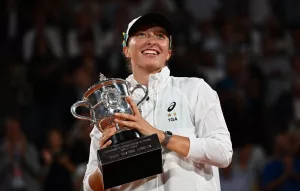
Saint Alcaraz…or Sinner?
In the men’s draw, all-round nice guy Carlos Alcaraz is the 2.4 favourite as the defending champion and Number 3-ranked player in the world and that’s probably fair enough. But he hasn’t been at his best this season so like with Swiatek, those don’t look like the most attractive of odds.
At around 3.2 you can back recent Australian Open winner Jannik Sinner but you should bear in mind that so far in his career, he hasn’t replicated his brilliant power game and remarkable consistency on clay, the way he has on hard courts.
So what’s it going to be?
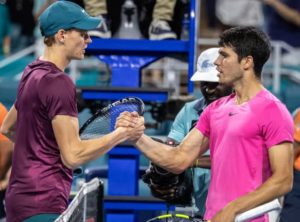
Ruud awakening for the bookies?
At the time of writing you won’t be able to get odds on this as only the winner market is available but Norwegian Casper Ruud is currently available at odds of 40.0 with at least four different online bookies (to win).
That should mean that nearer the time you’ll be able to secure odds of around 20.0 on him making the final (it then won’t matter if he wins it, or not); but even odds of 15.0 are more than good enough.
Clay-court specialist Ruud made (and lost) the French Open final in both 2022 (to Nadal) and 2023 (to Djokovic) before running into an inspired Alex Zverev in the semis last year, losing in four sets.
So that’s two runner-up finishes and a semi-final spot in the last three years; the Norwegian clearly likes it around here. Ruud boasts some of the best career stats of anyone on tour when it comes to playing on clay and though he hasn’t been at his best so far this year either, that’s partly because he hasn’t had the chance yet to play on his beloved red dirt yet.
Recommended Bet: Back Casper Ruud to make the French Open final @ 15.0 or better
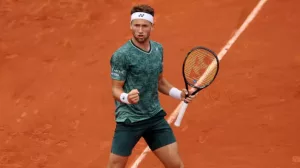
Why the biggest sports events provide you with the biggest returns?
So that’s plenty of information to absorb about Roland Garros in terms of its history, the mother of all tantrums that happened here back in 1999, the local lingo, some betting strategies to consider and even a solid tip to keep you interested. But if you’re a betting operator or an affiliate site aiming to drive readers to betting sites, why is all this relevant to you?
The biggest events have the most buzz. The Cheltenham Festival, the Super Bowl, the US Masters and the Champions League final are just some of the huge events on the global sporting calendar. For that week it’s all sports fans will be talking about and that’s what they’ll want to be reading about and betting on.How many times do you think ‘Roland Garros’, ‘French Open betting’, ‘French Open tips’, ‘Roland Garros history’ and so on will be searched for on Google over the next few weeks? Yes, lots. And as part of our SEO services here at All-In Global, we’ll make sure the articles we provide for you rank well so it’s your site Google users will end up on, as opposed to someone else’s.
Covering these events, including of course the French Open, with first-class content isn’t so much a case of jumping on the bandwagon as it is a no-brainer. Don’t give your competitors a ‘walkover’.
Quality shines through. Here are the last three winners of the men’s singles at Roland Garros: Novak Djokovic, Rafael Nadal and Carlos Alcaraz. The first has won more men’s Grand Slam singles titles in history than anyone else, Nadal ranks second on that metric and is considered the best clay courter ever, whereas the third is tipped to dominate the sport for the next decade. In other words: the cream rises to the top in Paris. The same happens with content.If you want to produce generic, meaningless, banal and unimaginative content about Roland Garros then just choose an AI tool, enter some prompts and see what it comes up with. It won’t cost you a dime.
But site visitors will read ‘’b*******’ with the same ease that Roger Federer could famously read Andy Roddick’s serve; and they won’t be impressed.
On the other hand, content written by experienced and knowledgeable (human) writers who have been watching Roland Garros since they were in nappies and know every player, stat and quirk of the tournament will write you something people will actually want to read. And when it comes to a reader deciding which bookie they should open an account at to bet on the French Open, they’re more likely to trust the expert, than the machine.
Keep it all under one roof. Everyone will have slightly different content needs for the French Open. Tournament previews, individual match previews, betting tips, stats analysis, bookie reviews of the best sites for French Open betting, terms and conditions for Roland Garros-related bonuses, tennis betting guides, player profiles, you name it.The good news for you is we can provide you with all that plus plenty more, including an SEO strategy.
Get on board with All-in Global and it will be ‘jeu, set et match’…to you.
Whatever your content needs are, related to sports, betting or otherwise, get in touch with our team at [email protected].




